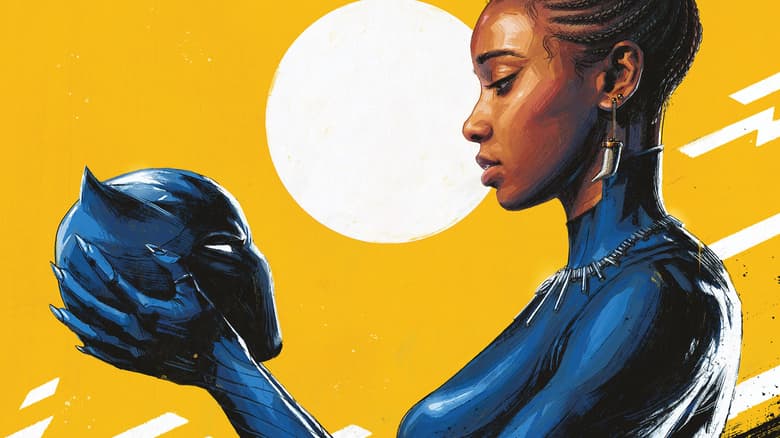
SHURI: FROM PRINCESS TO QUEEN
Author Nic Stone also knows a lot about Shuri. She’s written three Young Adult novels about Wakanda’s Princess for Marvel and Scholastic Books, exploring her teenage years in Wakanda and the ways she wields her scientific knowledge like a super-power.
“My favorite thing about writing the Shuri: A Black Panther Novel trilogy was getting to add to the canon,” Stone revealed. “When we first meet Shuri in the comics, she’s probably like 18 or 19 years old. She is looking to challenge the standing Black Panther and overtake that role. But somebody beats her to it, and that someone’s name is T’Challa! [Then] we meet her in the first film; she’s 16 years old or so. [In] the books that I write, she starts out as this 13-year-old kid. Her mother is very keen on her doing more princessey things and fewer combat-ish, science things. And she really is working to prove that what she is into is valuable to her beloved, beautiful mother.”
And, while hosting podcast series The History of Marvel Comics: Black Panther, Stone gained deeper insight into Shuri’s earliest appearances and comics evolution:
“I think something that a lot of people don’t realize is just how new Shuri is,” reflected Stone on the character’s first appearance from 2005. “It’s a very interesting thing to me when I think about how we create characters who have supposedly already lived a certain number of years, and you look back and it’s like, ‘Oh, well, this character burst out of the void at age 17, two years ago.’”
THE WORLD OF WAKANDA IN THE REAL WORLD OF SCIENCE
It’s one thing to be a fictional scientific genius. But Shuri’s stories are rooted in real-world science. For all her intergalactic travel and astral projection, Shuri isn’t that much different than scientists studying the wonders of our universe.
Like Sibrina Collins: a chemist and educator whose love of Shuri inspired her to bring Marvel into the classroom. “Ask an Expert” correspondent Isabel Robertson spoke to Collins about how the science of Wakanda can inspire students in STEM.
“I first became aware of Black Panther and Wakanda in 2018 when Marvel Studios’ Black Panther was released. I didn’t read comic books as a kid, [but] there was a lot of buzz about this new film, and my sister encouraged me to go see it. So, I go to the movies in February of 2018, and I’m enjoying the film,” Collins recalled. “And it occurs to me that Wakanda is thriving on a production and use of this so-called element called Vibranium. And because I’m a chemist and I can’t shut off my chemistry brain, I kept asking myself, ‘OK, if this element were real, where would it be? In a periodic table?’ And that’s what chemists do. We come up with these questions that we think are interesting and need a solution.”
Collins took her excitement one step further by drafting a curriculum outline for a new Periodic Table of Elements that asked students where Vibranium might fit. A colleague shared Collins’ question with students and the response was overwhelmingly positive.
“You just don’t know when and where inspiration will show up,” said Collins. “I did not plan to go into that theater and get inspired to write about the periodic table. I just saw this connection. We were interviewed by a journalist from Scholastic Science World, which is a magazine that’s read by over a million kids talking about science concepts. They created this lesson plan aligned with the next generation of science standards for students to classify Vibranium. So we’ve used those materials to create workshops for middle school students and high school students where they work in teams. And they think they’re trying to figure out where this fictional element will be, but what they’re really doing is learning about the organization of the periodic table. The students’ responses are just amazing. They are really into these Marvel films!”
The latest season of Women of Marvel has arrived! Tune into upcoming episodes spotlighting a new hero each Wednesday, available wherever you listen to your podcasts!



